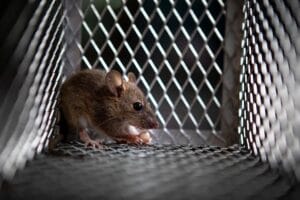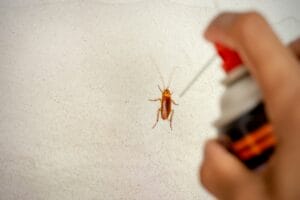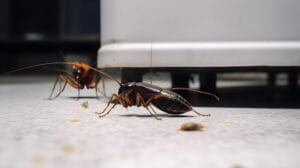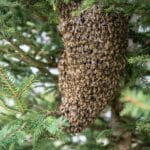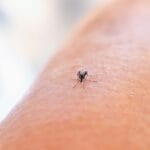Picture a home where pests are a thing of the past, where cutting-edge technologies work quietly to keep your home free of bugs. This future is closer than you might think. New pest control technologies are revolutionizing the field, making it simpler and safer to deal with pests without using dangerous chemicals. Here’s what you need to know to stay one step ahead of the pests and keep your home as a sanctuary.
Main Points
- High-tech pest control methods are providing safer, more effective ways to keep homes free of pests.
- Smart traps and real-time monitoring systems offer precise detection and control of pests.
- Ultrasonic devices and biological control methods offer environmentally friendly pest control options.
- Integration with the Internet of Things allows for a more networked approach to pest control, increasing efficiency.
- New technologies and regulations are influencing the future of pest control.
The Bug-Free Life: Welcoming the Tech Revolution in Pest Control
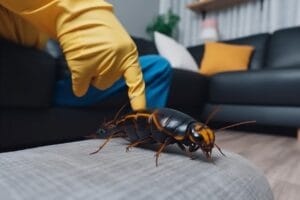
As we look for ways to keep our homes free of pests, it’s clear that the old ways of doing things are no longer sufficient. The tech revolution in pest control is bringing new tools to the table that are not only effective, but also prioritize our health and the environment. Let’s explore how these technologies are making the bug-free life possible.
As Pests Adapt, So Do We
As pests continue to adapt, becoming immune to common pesticides and discovering new ways to invade our homes, we are not staying idle. The pest control industry is constantly innovating, creating solutions that are just as clever as the pests themselves, ensuring we always stay one step ahead.
How Technology Raises the Stakes in Pest Wars
We’re not just battling pests anymore; we’re outwitting them. Thanks to technology, we can now track pest activity, learn about their habits, and target them accurately. This not only makes pest control more efficient, but it also lessens the requirement for broad-spectrum pesticides that can be detrimental to other wildlife and even people.
Understanding the Mechanism Behind These Technologies
These technological advancements are powered by a mix of data analysis, real-time monitoring, and focused intervention. We can create environments that are naturally repulsive to pests by understanding the specific conditions that attract them. Furthermore, when intervention is necessary, it is done with extreme precision, thanks to smart technology.
Using Science to Our Advantage: Modern Pest Repellents
Intelligent Traps: Using Data to Catch Pests
Intelligent traps are not your standard mousetraps. They come with sensors that can identify pests, trap them, and even send a notification to your phone. This allows you to swiftly deal with an infestation before it becomes a major problem.
Take, for instance, an intelligent mousetrap that uses infrared sensors to identify when a mouse has entered. As soon as the trap is set off, you get an immediate alert. You no longer have to wonder if a trap has been sprung. This up-to-the-minute information not only aids in prompt pest management but also in recognizing pest trends over time.
However, intelligent traps aren’t solely about capturing pests; they’re components of a broader pest control system. Here’s what they offer:
- Instant alerting of any pest activity.
- Gathering data on pest habits and infestation amounts.
- Less pesticide use by focusing on specific pests.
Nature’s Assassins: Biological Control Agents
Sometimes, the best pest control solution is a natural one. Biological control agents, such as helpful insects or microorganisms, are brought into an environment to fight pests. These agents are natural predators or diseases of the pests we’re trying to control.
Let’s consider ladybugs. These adorable, spotted creatures are not only visually appealing; they also have a voracious appetite for aphids, a common pest that plagues many gardens. By introducing ladybugs into a garden, you can effectively and naturally decrease the number of aphids without having to resort to harmful chemical solutions.
There are several benefits to using biological control agents:
- They specifically target pests without harming other organisms.
- They leave no chemical residue behind, making them environmentally friendly.
- They can provide long-term control by establishing themselves in the ecosystem.
Ultrasonic Devices: The Future of Pest Control
Ultrasonic devices represent a futuristic approach to pest control. They emit high-frequency sound waves that pests find intolerable but are inaudible and harmless to humans and pets. These devices can be plugged into any standard outlet, making them a convenient pest control option.
Though the efficiency of ultrasonic tools can differ based on the pest and setting, a lot of people have seen positive results in warding off mice, roaches, and other typical home pests.
Advantages of ultrasonic pest repellents are:
- No chemicals or traps required.
- They provide continuous pest prevention.
- They are safe to use around kids and pets.
These advanced solutions are changing the way we handle pest control, making it simpler to keep a home free of pests without sacrificing safety or environmental health. Keep an eye out for more tips on how to incorporate these technologies into your pest control routine and the thrilling advancements coming up.
Environmentally Friendly, Pests’ Worst Nightmare
Non-Chemical Repellents: A Sigh of Relief
For those of us who care about the environment, the idea of using harsh chemicals to control pests is uncomfortable. Luckily, the increase in non-chemical repellents means we can keep our homes free of pests without risking our health or the environment. These repellents use natural substances that pests find unpleasant but are totally safe for humans and pets.
Take essential oils, for example. Many people swear by peppermint oil, citronella, and lemongrass for their ability to ward off pests. Just a couple of drops in the right places can deter ants, mosquitoes, and other pests. It’s a method that smells good to us but sends bugs running.
Pinpoint Pest Control: Saving the Environment
Pinpoint pest control is all about accuracy. They concentrate on the issue at hand without causing harm to the surrounding environment. This implies that pests can be handled directly, frequently by using bait stations or localized applications of natural predators or biopesticides.
By concentrating on treatments, we lessen the inadvertent harm to species that are not the target and decrease the environmental impact of pest control. It’s a victory for both our homes and the environment.
Blending Technology with Pest Control Practices
IOT Use: The Connected Pest Approach
The Internet of Things (IoT) is transforming pest control by linking devices and enabling them to interact. Picture a series of intelligent traps spread throughout your house, all feeding information back to a central hub. This hub can scrutinize the data, recognize trends, and even forecast upcoming infestations, making it possible for preemptive pest control.
Internet of Things (IoT) devices can be set up to react to pest activity as it happens, adjusting their tactics and notifying homeowners of pests in their home. This level of interconnectivity means that pest control can now be not just reactive, but also predictive and preventive.
Heat-detecting Drones: Spotting the Hotspots Without Getting Burnt
Drones that have thermal imaging can find areas where pests are highly active by seeing heat signatures. This is especially helpful for large properties or in farming, where it is hard to see pests without help. These drones can fly over a place, find exactly where the pests are, and let people treat those areas.
Heat-detecting drones allow pest control experts to respond swiftly to potential infestations, saving time and resources and preventing property damage.
Case Studies: Innovative Pest Control Success Stories
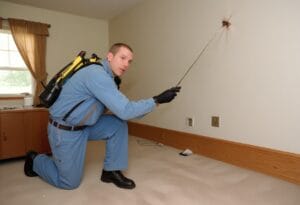
While theories are great, in pest control, it’s the real-world success stories that really build trust. Let’s explore a few instances where innovative pest control technologies have made a real difference.
Nationwide Implementation of Intelligent Trapping Systems
Recently, a nationwide implementation of intelligent trapping systems was launched to address rodent populations in city areas. These traps were linked to the city’s waste management system, providing live data on rodent activity and allowing quick responses to infestations.
The outcome was remarkable. The rodent capture rate surged by 200%, while pesticide use plummeted. This program not only made the cities more hygienic and secure, but also demonstrated the capabilities of intelligent technologies in public pest control initiatives.
Biological Controls for Citywide Mosquito Management
In a tropical city, mosquito-borne diseases were a major problem. The city introduced biological control agents, specifically bacteria that target mosquito larvae. This reduced the mosquito population without causing harm to other wildlife.
This approach resulted in a 60% reduction in mosquito-borne diseases, demonstrating that biological controls can be a potent weapon in the battle against pests.
For instance, a tiny town suffering from a rat problem utilized intelligent traps, which not only solved the issue but also offered data that aided in preventing future infestations.
These real-life examples demonstrate the game-changing power of cutting-edge pest control technologies. They prove that with the correct equipment and methods, pests can be controlled effectively while also taking into account the environment and public health.
Looking Ahead: Forecasting Pest Control’s Future
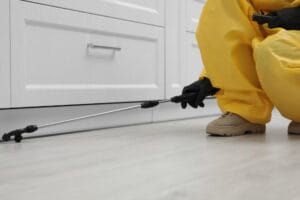
Looking to the future, it’s obvious that pest control will keep advancing. The incorporation of AI, machine learning, and increasingly complex IoT systems will result in more intelligent, proactive pest control methods. We can anticipate:
- More drones are being used for surveillance and applying treatments.
- Biological controls are becoming a key strategy in pest management.
- There is a growing focus on educating the public and getting individuals involved in preventing pests.
As more people become aware of this issue, it’s likely that regulations will get stricter. This will push the pest control industry to use even more environmentally friendly and sustainable methods. The future of pest control is not just about getting rid of pests, but about creating environments where pests are no longer an issue.
Adopting these new technologies now will prepare us for the pest control issues we may face in the future. It’s an exhilarating era for those of us who desire to live in homes free of bugs, without sacrificing our principles or harming the environment. With these innovations, a future without pests is attainable.
Changes in Laws and Public Opinion
The pest control scene is not only influenced by technological progress but also by changes in laws and public opinion shifts. With growing awareness of environmental issues, there is a rising demand for pest control techniques that are not only efficient but also sustainable and humane. Laws are beginning to reflect this change, with stricter controls on chemical pesticides and a heightened focus on integrated pest management (IPM) methods.
FAQ
What is the Functioning Mechanism of Ultrasonic Pest Repellents?
Ultrasonic pest repellents function by releasing sound waves of high frequency, which are intended to cause discomfort to pests, thereby making them leave the area. These sound waves are of such high frequency that they cannot be heard by human ears, thus making them a subtle option for pest control. These devices have shown to be particularly successful in repelling rodents and certain kinds of insects.
Can I Use Smart Traps Safely in My Home?
Yes, you can use smart traps safely in your home. They are created to be non-toxic and often use bait to attract pests without using dangerous chemicals. Also, many smart traps have safety features that stop children and pets from reaching the trapped pest or the bait inside.
What Makes Chemical-Free Repellents Environmentally Friendly?
Chemical-free repellents are environmentally friendly for several reasons, such as:
- Minimizing the chance of non-target species, including beneficial insects, pets, and humans, being exposed to chemicals.
- Preventing the contamination of soil and water sources by chemical residues.
- Supporting biodiversity by allowing ecosystems to maintain their natural balance.
Can Innovative Pest Control Increase Agricultural Crop Yields?
Absolutely. Innovative pest control technologies, such as precision targeting and biological control agents, can greatly increase agricultural crop yields. By reducing pest populations without damaging crops or beneficial species, these technologies ensure that plants stay healthy and productive, leading to increased yields and better quality produce. For more information on how to protect your home from pests, check out our comprehensive guide to selecting the best home pest control service.
How is IoT Improving the Efficacy of Pest Management?
The Internet of Things (IoT) is improving the efficacy of pest management by providing real-time monitoring and data analysis. IoT allows pest control devices to communicate with each other and with central management systems, which means pest detections can be responded to immediately and control strategies can be optimized. This level of interconnectivity leads to more effective and efficient pest management, reducing labor and resource usage.
Innovative Pest Control Technologies: The Future of Bug-Free Living

